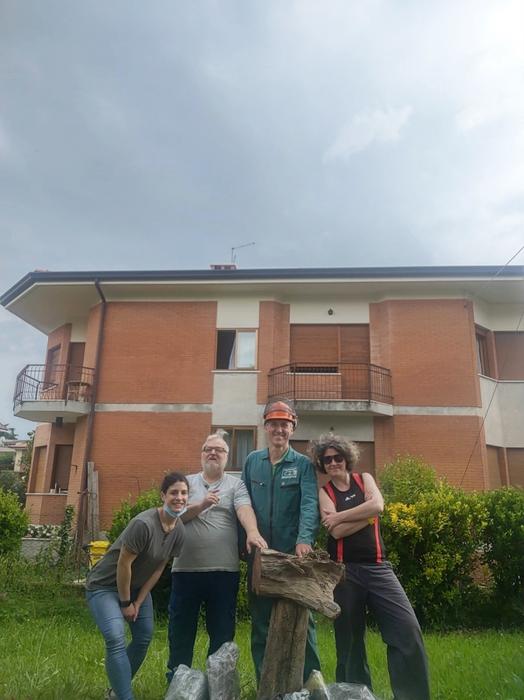The development of a high precision record of atmospheric radiocarbon shifts beyond 14,000 calendar years BP – obtained through combined studies (e.g., dendrochronology, radiocarbon dating and comparisons with other radionuclide records) – represents a crucial improvement within the widely applied radiocarbon dating method, allowing more accurate dating of sub-fossil samples and hence, establishing the chronology of past environmental and climate changes during glacial times. This improvement will play a key role in the construction of the future radiocarbon dating calibration curve.

Credit: University of Bologna
The development of a high precision record of atmospheric radiocarbon shifts beyond 14,000 calendar years BP – obtained through combined studies (e.g., dendrochronology, radiocarbon dating and comparisons with other radionuclide records) – represents a crucial improvement within the widely applied radiocarbon dating method, allowing more accurate dating of sub-fossil samples and hence, establishing the chronology of past environmental and climate changes during glacial times. This improvement will play a key role in the construction of the future radiocarbon dating calibration curve.
The present upgrade, which captures considerable variations of atmospheric radiocarbon levels based on the construction of a 1000-year long tree-ring chronology, was published in Communication Earth and Environment. The study is led by Professor Sahra Talamo, director of the BRAVHO Lab at University of Bologna, in collaboration with international experts in the field of dendrochronology, radiocarbon, cosmogenic radionuclides in ice cores, and modelling from the University of Hohenheim, University of Heidelberg, the Alfred Wegener Institute (Germany), the University of Leeds, (UK), Lund University, (Sweden), and ETH Zurich (Switzerland).
This interdisciplinary research represents an important contribution to the IntCal group, committed to the elaboration of a globally agreed reconstruction of 14C levels in three main environments (Northern Hemispheric atmosphere, Southern Hemispheric atmosphere and the surface oceans). The team was able to detect greater variations of atmospheric radiocarbon levels between 18,475 and 17,350 calendar years BP than previously shown by the last calibration curve, known as IntCal20. A new tree-ring chronology was obtained using 33 larch subfossil trees from the site of Revine, located in the Venetian Prealps (Northeastern Italy), that grew during important intervals of deglaciation. The comparison with 10Be in ice cores, another cosmogenic radionuclide that is, like 14C, produced when cosmic rays enter the atmosphere, led the research group to connect the reconstructed changes in atmospheric radiocarbon to periodic changes in solar activity, widely attested within the Last Glacial.
The core of the study is to supplement the existing calibration curve with 14C-series from annually resolved tree rings, which track the variation of 14C in the atmosphere much better than the previous archives from lake sediments, stalagmites and marine sediments. Thus, being extremely accurate in the reconstruction of atmospheric radiocarbon values through time allows both to become more precise with radiocarbon dating and to infer climate and cosmic ray flux, which occurred in the past. “The more accurate our knowledge of past 14C levels, the more accurately we can calibrate a 14C measurement to obtain the sample’s calendar age”, highlights Sahra Talamo, leader of the research group and PI of the ERC_StG RESOLUTION, which aims to increase the dating accuracy to solve key questions within human evolution.
This higher level of accuracy was only reached through the first establishment of three tree-ring series covering a 1200-year period between 18,475 and 17,350 calendar years BP in this crucial climate period and just before the starting point of the even more accurate and well-established, tree-ring based part of the radiocarbon calibration curve. “The new robust tree-ring chronologies of the Glacial trees from Revine represent the solid basis for our high-resolution 14C series described in this work”, says Michael Friedrich, the dendrochronology specialist based at the University of Hohenheim, Stuttgart.
Then, another analysis was carried out on exploiting 10Be stored in ice cores: “(..) due to their own dating uncertainties, ice cores cannot be used to provide strong (independent) constraints on the precise calendar ages of the Revine trees during this period” clarifies Florian Adolphi, a specialist on cosmogenic radionuclides. “Nonetheless, the 10Be record is still able to provide useful inferential support”. Indeed, comparing 14C values of Revine chronologies with 10Be of ice cores resulted in the determination of the cause of the reconstructed atmospheric radiocarbon changes during this critical time period.
“This work clearly shows the strength of the combined studies of dendrochronology, radiocarbon dating and 10Be to develop new floating tree-ring width chronologies and high-resolution 14C-data sequences from sub-fossil trees grown during the most recent glacial period”, stresses out Bernd Kromer, a physicist expert in tree-ring based radiocarbon calibration.
“In general, our tree-ring Revine data appear to confirm the sequence of the Chinese Hulu cave speleothem 14C data but with a resolution that is 10 times greater and with a reduced level of smoothing”, states Timothy J. Heaton, responsible for the estimation of absolute calendar ages for the Revine radiocarbon chronologies developed in the present study.
“This pivotal research in the field of radiocarbon underlines the importance of having a robust chronology as the basis for reconstructions not only of our human past events but of key climate and Earth processes,” concludes Prof. Talamo.
Journal
Communications Earth & Environment
DOI
10.1038/s43247-023-00929-9
Article Title
Atmospheric radiocarbon levels were highly variable during the last deglaciation




